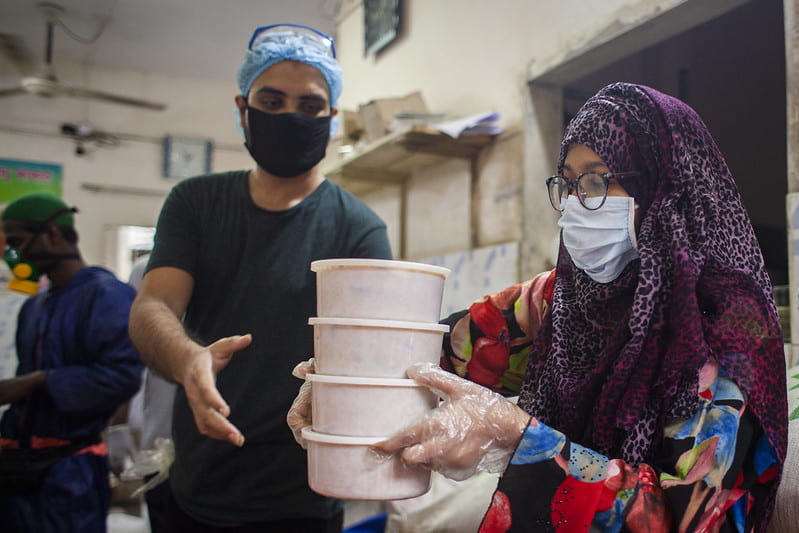After almost a year, COVID-19 still has a significant impact on our lives. In Canada, the provinces of Alberta, British Columbia, Quebec and Ontario have recorded some of their highest case numbers in the past month. Globally, COVID-19 cases have almost hit 50 million at the time of writing. With rising misinformation and a second wave well underway, it is clear that we must take a critical look at the global COVID-19 response.
One effective strategy to implement during this time is community engagement. Without a clear definition, it can be difficult to define what this term means on the global stage. The Tamarack Institute for Community Engagement, a Canadian non-profit organization, defines community engagement as the act of empowering citizens to be engaged and work in accordance with people and governments, realizing a bold future for their community. It could be a unique solution to our current crisis, as it establishes direct trust with community members. This article highlights the success of community-led approaches in tackling COVID-19, using case studies from various global regions, including North America, the Middle East, Africa, Latin America, Europe, and Australia.

In Canada, for example, Ontario Together is a program established by premier Doug Ford’s government. With one click, you can find information on supplying protective equipment, volunteering, and submitting feedback and ideas. Between March and April of 2020, over 14,000 submissions were received from people across the province. Reaching out to communities at a provincial level to hear their thoughts and to help others during this time allows people to feel empowered in their work. Case numbers rose once again after restrictions were loosened for gatherings and businesses, but the community-based approach taken by the provincial government is unique in banding citizens together and allowing them to share how those around them are impacted.
In the Middle East, civic organizations have also launched community engagement efforts. The case of northwestern Syria demonstrates how difficult it is to lead a response due to conflict in the region. Health care workers are at risk of attack and suffer from a lack of resources. Instead, the Idleb Health Directorate (IHD) has been leading a grassroots governance movement with local doctors to build community trust. Local actors like the White Helmets are taking volunteer and leadership roles. Together, volunteers have been in neighbourhoods and linking on WhatsApp, sharing information about disinfection and high-risk groups. In April 2020, northwestern Syria had no reported cases of COVID-19; it cannot be confirmed, however, due to lack of testing. By September, the area has 640 cases of COVID-19, 30% of them impacting health workers. Due to its geographic location, separate from much of the country’s infection, northwestern Syrians were able to avoid the virus for some time. However, the close quarters of a conflict-ridden zone make distancing and proper hygiene very difficult to practice. Given these challenging conditions, efforts from local organizations is more important now than ever.
In parts of Africa, more traditional engagement has been making headway in alerting community members of the virus. In Chad, for example, the International Organization for Migration has been able to provide important information on health practices and hygiene to town criers in rural and displaced communities. In northern Uganda, the Acholi people walk through their community banging jerrycans and saucepans in a practice known as Ryemo Gemo. It is used to chase out bad spirits and has been associated with illness during outbreaks of Ebola and measles. By doing this, they are creating awareness around COVID-19 while recognizing the importance of cultural traditions in their community.
South Africa’s approach to community engagement shows how people can band together when government support seems minimal. Original lockdown measures did not consider the working class, and a proposed food distribution system has not been effective. Organizations like Amava Oluntu have taken the reins to create a grassroots movement helping those threatened by food insecurity. By using community mapping to identify regional needs for resources, they were able to bring representatives together and create community kitchens. Within four weeks, the group was able to establish 10 kitchens in the area of Vrygrond, where people can get food and discuss issues related to COVID-19. Members of Amava Oluntu hope that these kitchens can be a site of knowledge exchange in the future, looking towards long-term change through community support.
People in Latin America have been protesting in response to rising inequalities and COVID-19 responses. In Bolivia, for example, protestors organized a roadblock on major highways after elections were postponed twice. Meanwhile, the people of Chile are clashing with police as they protest insufficient care packages and food shortages during the lockdown. Brazil’s protest numbers have increased as President Jair Bolsonaro calls COVID-19 a “little flu” and the country becomes a hot spot for the virus. Although government response to citizens of Latin American countries is less than effective, people across the continent have been gathering to interact with their political environment.
The post COVID-19 world could look very different thanks to community engagement efforts. For one, it could allow safer access to local businesses. The city of Milan in Italy plans to expand sidewalks and bike lanes when COVID-19 restrictions are lifted to make supporting the local economy much easier. Meanwhile, Australia’s universities are recognizing the importance of local community engagement and are involving themselves in community work that considers all solutions equally. In the future, this kind of engagement could involve partnerships to create local organizations, credit-based community work, and partnerships with Indigenous communities. In the United Kingdom, the National Health Service acquired about a million volunteers through their app and volunteer centres, signalling a larger movement for people to help others in their community.
Overall, community engagement efforts are alive across the globe. From government associated programs to grassroots movements, engagement differs based on social, economic, and political circumstances. Strong support from policymakers is crucial here, whether it be through policy or community capacity building. Whether it be financial support, social safety nets, or co-operation in policymaking, government support in grassroots efforts can empower communities further with the proper resources. In this, engagement is like climbing a rock wall; you have to climb up from the bottom, but a helping hand from the top couldn’t hurt.

Emma Biffi is a second year International Development Studies student with an emphasis in Development in the Canadian Context. She is interested in exploring issues of socioeconomic inequalities and community engagement within Canada and at the local level. Emma hopes to explore the potential of community development efforts in the future working within the non-profit sector.

